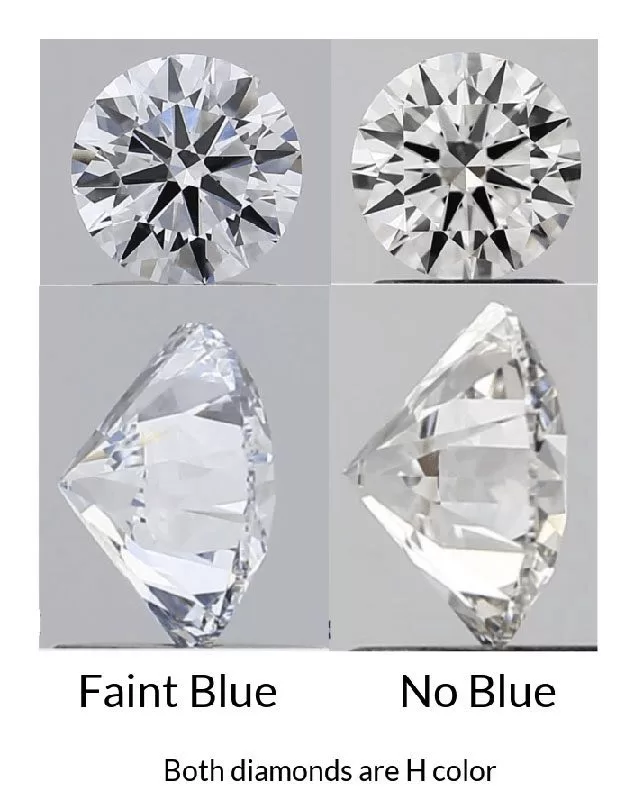Discovering the Beauty in Imperfections A Guide to Diamond Inclusions

There is such a thing as diamond inclusions, which could be a beautiful thing. However, it’s imperative to work with a reliable jeweler, like Rare Carat, who will take customers step-by-step in getting the proper diamond inclusion for them. Rare Carat is America’s number one source of unbiased advice for diamond engagement rings. Customers can view here Rare Carat for more details. Customers can also read more about this company. Thus, customers won’t go wrong with Rare Carat regarding diamond inclusions and more.

What is a Diamond Inclusion?
Diamond inclusions are encapsulated, non-diamond materials in a diamond. These materials usually form due to tons of high temperatures and pressure in the earth’s mantle. During these formations, various clarity characteristics are on and in diamond crystals. And even though a diamond’s surface mark is considered a ‘blemish,’ it can give uniquely beautiful qualities to diamonds.
How does a Trustworthy Gemologist Grade Diamond Inclusions?
IGA and GIA are reputable third-party diamond-certifying facilities. They use strict guidelines to determine the type of diamond inclusion. They use numerous factors, ranging from size to location, to select and identify it. In fact, Rare Carat uses free gemologist checks on GIA-certified diamonds.

Kinds of Diamond Inclusions
There are several kinds of diamond inclusions, which are as follows:
- Bruise: An inclusion that looks like feathers and is located at the junction of the facet
- Cavity: This inclusion looks like a vast or deep opening on a diamond’s surface.
- Chip: It is on a diamond’s surface close to the facet or girdle junctions. This is usually man-made. Wear and tear, and accidental knocks usually cause this inclusion.
- Cleavage: These inclusions are cracks, considered serious flaws that diminish stability.
- Cloud: Comprising several tiny pinpoints, this inclusion is tightly crammed around each other, making it difficult to separate.
- Crystal: This is a mineral crystal in a diamond that could be black or colorless. This inclusion could also be green, like peridots, or red, like garnets.
- Etch Channel: This inclusion begins at the diamond’s surface, penetrating the body. It is a hollow tunnel.
- Extra facet: This is a polished, flat surface produced during the polishing of the diamond to cover the natural.
- Feather: Appearing like a fracture within a diamond, this inclusion can appear when the light catches the fracture, or it could be transparent. The appearance depends on the angle’s view. Durability issues may occur where feathers reach the surface/girdle.
- Indented Natural: Usually found at the girdle, the rough part is underneath the diamond’s polished surface. This is a portion of the unpolished diamond left untouched during manufacturing.
- Internal Graining: This irregular crystal growth produces this inclusion. This inclusion could be in curves, lines, or angles that occasionally affect brilliance at 10X magnification.
- Internal Laser Drilling: This inclusion could lead to pre-existing feather expansion or produce a surface-stretched feather. Laser drilling creates this inclusion. Durability issues are possible.
- Knot: This extends to the surface and has a transparent or white crystal-like appearance.
- Laser Drill-hole: A laser light beam drilling a diamond creates a tiny, surface-reaching hole called a laser drill-hole.
- Manufacturing Remnant: This man-made inclusion occurs during the encounter of excessive heat or the polishing process. Most manufacturing remnants are not visible, and some show milky patches.
- Minor Details of the polish: The grading system doesn’t consider this inclusion a flaw because it’s a little polishing detail that is barely noticeable.
- Natural: Caused by the natural course, this inclusion is a diamond’s rough part left untouched during manufacturing.
- Needle: This inclusion is a thin, elongated tiny rod in a crystal-like formation with visibility at 10X magnification.
- Pinpoint: It has a very tiny crystal or tiny dot appearance with visibility under a magnifying glass.
- Surface Graining: Impurities produce growing, thin-like crystals on the diamond’s surface.
- Twinning Wisp: This includes pinpoints, crystals, or clouds created during the growing procedure. Crystal distortion and twinning planes link with it.

For More Information
For more information about diamond inclusions, contacting a reliable gemologist is critical; Rare Carat is the way to go. As previously mentioned, customers should view Rare Carat for more details on how Rare Carat operates. They should also read the provided BBB link concerning Rare Carat for more assurance.
Rare Carat also has 4.9/5 reviews on both Trustpilot and Google Business Profile. Customers will be in perfect hands with Rare Carat due to these and other mentioned qualities.










